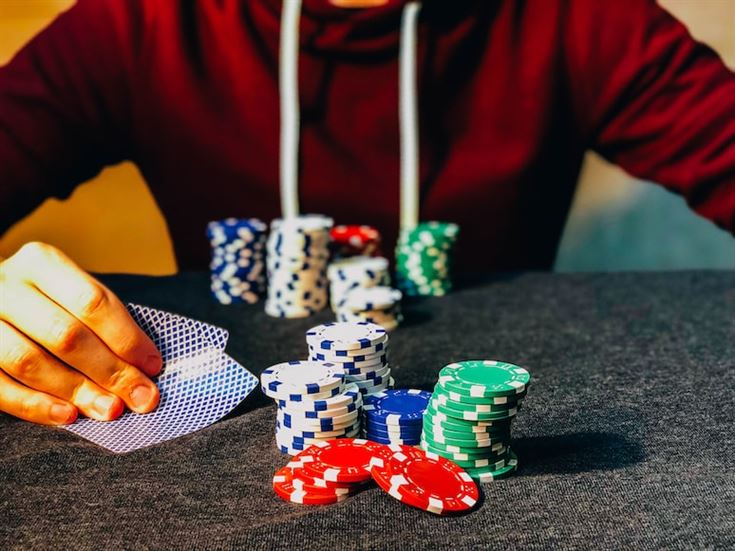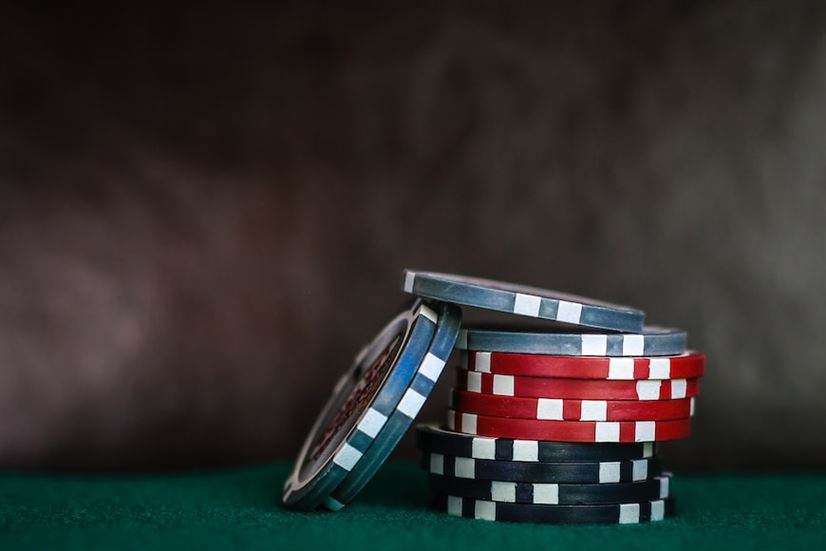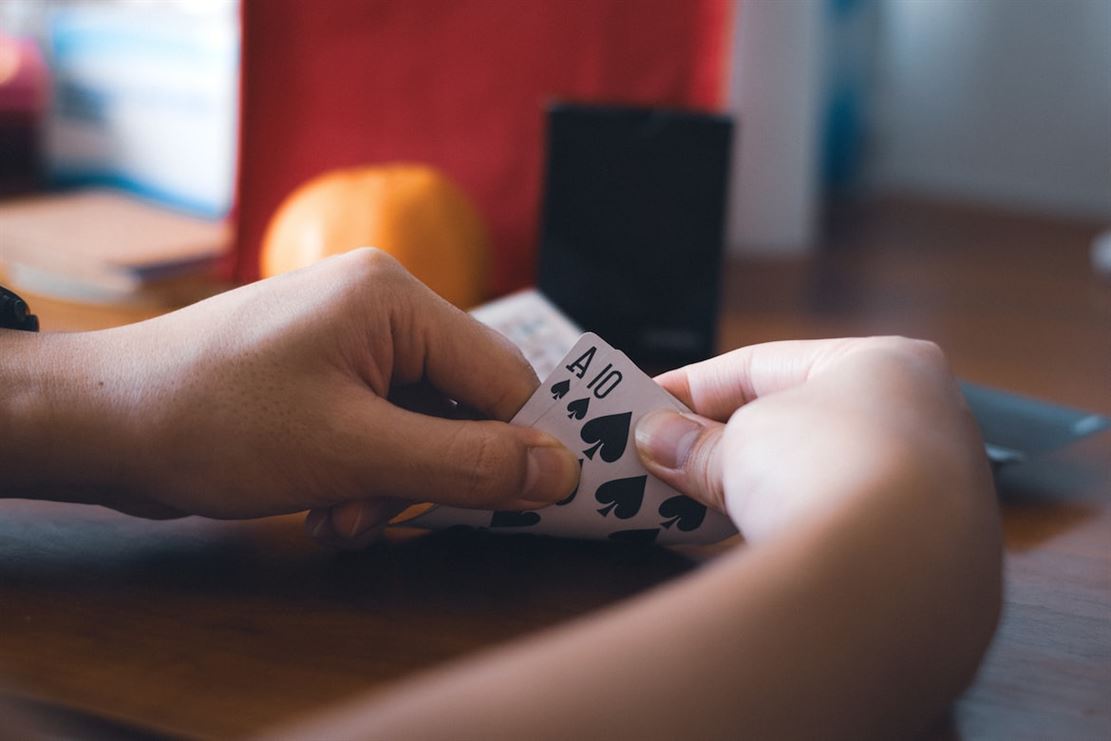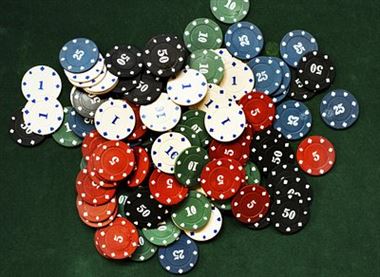“Mastering the Art of Bluffing: A Comprehensive Guide to Poker Strategy” is a comprehensive resource that delves into the intricacies of bluffing in the game of poker. This guide aims to equip players with the necessary knowledge and techniques to effectively employ bluffing as a strategic tool. By understanding the psychology behind bluffing, reading opponents, and implementing various bluffing strategies, players can enhance their overall poker skills and increase their chances of success at the table. Whether you are a beginner or an experienced player looking to refine your bluffing skills, this guide provides valuable insights and practical tips to help you become a master of the art of bluffing in poker.
The Importance of Bluffing in Poker Strategy: How to Use Deception to Your Advantage
Bluffing is an essential tool in a poker player’s arsenal for several reasons. Firstly, it allows you to win pots that you would otherwise lose. By convincing your opponents that you have a strong hand, they may fold their weaker hands, allowing you to take the pot without having to show your cards. This is particularly useful when you have a weak hand but believe that your opponents have even weaker hands.
Secondly, bluffing can help you build a table image. If you successfully bluff your opponents a few times, they will start to perceive you as a fearless and aggressive player. This can work to your advantage in future hands, as your opponents may be more likely to fold to your bets or raises, even when you have a strong hand. However, it is important to note that bluffing too often can backfire, as observant opponents may catch on to your strategy and start calling or re-raising your bluffs.
To effectively bluff in poker, you need to consider several factors. Firstly, you need to assess the table dynamics and the playing styles of your opponents. Bluffing is more likely to be successful against tight and cautious players who are more inclined to fold their weaker hands. On the other hand, bluffing against loose and aggressive players may be riskier, as they are more likely to call or re-raise your bets.
Timing is also crucial when it comes to bluffing. Bluffing too early in a hand, when there are still many players in the pot, is generally not recommended. The more players there are, the higher the chances that someone has a strong hand. Bluffing is more effective when there are fewer players left in the hand, as the likelihood of someone having a strong hand decreases.
Another important aspect of bluffing is your betting patterns. Consistency is key when it comes to betting. If you always bet the same amount when you have a strong hand and a weak hand, your opponents will have a harder time figuring out whether you are bluffing or not. Varying your bet sizes can also be a useful strategy, as it can confuse your opponents and make it harder for them to put you on a specific hand.
Mastering the Art of Reading Opponents: Understanding Non-Verbal Cues in Poker
Non-verbal cues, also known as body language, are the subtle signals that people give off through their physical movements, facial expressions, and gestures. These cues can reveal a lot about a person’s emotions, confidence, and even their level of deception. In poker, being able to interpret these cues can help you make more informed decisions and increase your chances of winning.
One of the most common non-verbal cues in poker is the way opponents handle their chips. When players have a strong hand, they tend to be more relaxed and confident, often stacking their chips neatly and calmly. On the other hand, players with weaker hands may fidget with their chips, stack them haphazardly, or even avoid touching them altogether. By observing these behaviors, you can get a sense of the strength of your opponents’ hands and adjust your strategy accordingly.
Another important non-verbal cue to watch for is eye contact. In poker, eye contact can reveal a lot about a person’s confidence and the strength of their hand. Players with strong hands often maintain steady eye contact, trying to intimidate their opponents and project a sense of dominance. Conversely, players with weaker hands may avoid eye contact or glance away nervously, indicating their lack of confidence. By paying attention to these subtle cues, you can gain valuable insights into your opponents’ hands and make more accurate decisions.
Facial expressions are also crucial non-verbal cues to consider. A sudden twitch, a raised eyebrow, or a slight smile can all provide valuable information about your opponents’ emotions and the strength of their hand. For example, a player who suddenly smiles after seeing their cards may have been dealt a strong hand, while a player who grimaces or frowns may be disappointed with their cards. By carefully observing these facial expressions, you can gain an advantage in the game and make more strategic moves.
Gestures and body movements can also reveal important information about your opponents’ intentions. For instance, a player who leans forward and appears more engaged may be signaling that they have a strong hand and are ready to make a move. On the other hand, a player who slumps back in their chair or crosses their arms may be indicating a lack of confidence or a weaker hand. By paying attention to these gestures, you can adjust your strategy accordingly and make more informed decisions.
It is important to note that non-verbal cues should not be relied upon solely, as they can sometimes be misleading or misinterpreted. However, when combined with other factors such as betting patterns and previous actions, they can provide valuable insights into your opponents’ strategies and help you make more informed decisions.
Advanced Bluffing Techniques: Taking Your Poker Strategy to the Next Level
One of the most powerful advanced bluffing techniques is the semi-bluff. Unlike a pure bluff, a semi-bluff involves betting with a hand that has the potential to improve in later rounds. By doing so, you not only have a chance to win the pot immediately but also have the opportunity to make a strong hand if your bluff is called. This technique is particularly effective when you have a drawing hand, such as a flush or straight draw, as it adds an extra layer of deception to your play.
Another advanced bluffing technique is the double-barrel bluff. This strategy involves making a continuation bet on the flop and following it up with another bet on the turn, regardless of whether your hand has improved or not. The key to a successful double-barrel bluff is to carefully read your opponents’ reactions and adjust your betting accordingly. If your opponents show signs of weakness or uncertainty, it may be a good time to fire that second barrel and force them to fold.
The reverse bluff is a technique that can catch even the most experienced players off guard. Instead of trying to convince your opponents that you have a strong hand, you deliberately act weak and vulnerable, hoping to induce them to make a big bet or raise. Once they take the bait, you can then spring your trap and make a well-timed re-raise, forcing them to fold or commit more chips to the pot. The reverse bluff is a high-risk, high-reward strategy that requires careful timing and a deep understanding of your opponents’ playing styles.
The squeeze play is an advanced bluffing technique that can be highly effective in multi-way pots. This strategy involves re-raising a pre-flop raiser and any callers behind them, with the intention of forcing them to fold and winning the pot uncontested. The squeeze play works best when you have a tight table image and your opponents perceive you as a strong player. By applying pressure in this way, you can exploit their fear of losing chips and capitalize on their reluctance to play a big pot without a premium hand.
Finally, the overbet bluff is a daring move that can leave your opponents scratching their heads. This technique involves making a bet that is significantly larger than the size of the pot, creating the illusion that you have an unbeatable hand. The overbet bluff is most effective when used sparingly and against opponents who are capable of folding strong hands. By making a bold move like this, you can put your opponents in a difficult spot and force them to make tough decisions with their chips on the line.
The Psychology Behind Bluffing: How to Manipulate Your Opponents’ Decisions
Bluffing is a psychological game within the game of poker. It requires a deep understanding of human behavior and the ability to read your opponents’ reactions and body language. The first step in mastering the art of bluffing is to observe your opponents closely. Look for any signs of nervousness, hesitation, or excitement when they are making their decisions. These subtle cues can provide valuable insights into the strength of their hand and their level of confidence.
Once you have identified potential targets for your bluff, it is essential to create a strong table image. This means establishing a reputation as a player who only plays strong hands. By consistently playing tight and aggressive, you can build a perception among your opponents that you only enter pots with premium holdings. This image will make it more likely for your opponents to fold when you decide to bluff, as they will be hesitant to challenge your perceived strength.
Timing is everything when it comes to bluffing. It is crucial to choose the right moment to execute your bluff. This requires a keen sense of the dynamics at the table and an understanding of your opponents’ playing styles. Bluffing early in a hand, when there are still many players involved, is generally riskier as there is a higher chance that someone actually has a strong hand. On the other hand, bluffing late in a hand, when the number of players has dwindled, can be more effective as there are fewer opponents to contend with.
Another important aspect of bluffing is the size of your bet. A well-executed bluff should be convincing, and the size of your bet plays a crucial role in achieving this. A small bet may not be enough to scare your opponents into folding, while an overly large bet may raise suspicions and lead to a call. It is essential to find the right balance and make a bet that is consistent with the story you are trying to tell with your bluff.
Furthermore, it is important to be aware of your own emotions when bluffing. Maintaining a calm and composed demeanor is crucial to avoid giving away any tells that may reveal the weakness of your hand. It is natural to feel nervous or excited when executing a bluff, but it is important to control these emotions and present a confident front to your opponents.
Bluffing as a Strategic Tool: When and How to Execute a Successful Bluff in Poker
Timing is everything when it comes to bluffing in poker. You must choose the right moment to make your move. Bluffing too often or at the wrong time can be disastrous for your chip stack. The key is to observe your opponents and identify their playing styles. Look for players who are more cautious and tend to fold easily. These are the players you should target when attempting a bluff. Additionally, consider the current state of the game. Bluffing is more effective in the later stages of a tournament when the blinds are high and players are more desperate to stay in the game.
Once you have identified the right moment to bluff, it is essential to execute it properly. The first step is to create a believable story. Your actions and betting patterns should align with the hand you are trying to represent. For example, if you are bluffing a flush, you should bet aggressively and confidently, as if you have a strong hand. However, be cautious not to overdo it. Excessive betting can raise suspicion and lead your opponents to call your bluff.
Another crucial aspect of executing a successful bluff is reading your opponents’ reactions. Pay close attention to their body language, facial expressions, and betting patterns. Look for signs of discomfort or hesitation, as these may indicate that they are unsure about the strength of their own hand. If you notice any signs of weakness, it may be the perfect opportunity to execute your bluff. However, be aware that experienced players may try to deceive you by displaying false tells. Therefore, it is important to consider the overall context of the game and not rely solely on individual cues.
Furthermore, it is important to vary your bluffing strategy to keep your opponents guessing. If you become predictable, your bluffs will lose their effectiveness. Mix up your bluffing frequency and the types of hands you choose to bluff with. This will make it harder for your opponents to read your intentions and increase the chances of your bluff being successful.
Lastly, it is crucial to know when to abandon a bluff. Sometimes, despite your best efforts, your bluff may be called. In such situations, it is important to have a backup plan. If you are caught bluffing, it is essential to adjust your strategy and play more cautiously in the future. Remember, poker is a game of adaptation, and being able to adjust your strategy on the fly is a key skill for any successful player.
In conclusion, bluffing is an essential tool in a poker player’s arsenal. It can be used to manipulate the game, gain an advantage over opponents, and ultimately win more pots. However, mastering the art of bluffing requires careful observation, timing, and execution. By choosing the right moment, creating a believable story, reading your opponents’ reactions, varying your strategy, and knowing when to abandon a bluff, you can become a formidable force at the poker table. So, practice these techniques, refine your skills, and get ready to bluff your way to victory!




